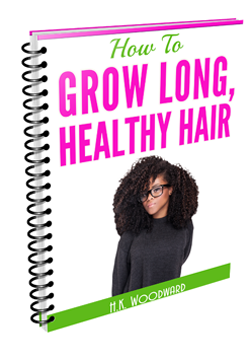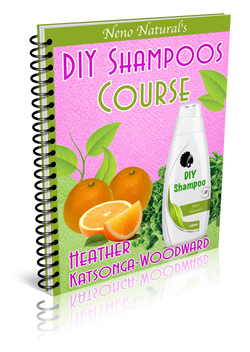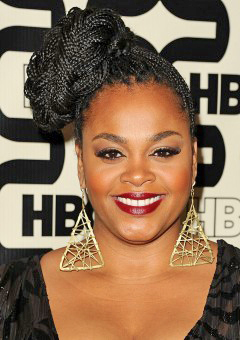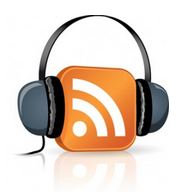|
When you see an ingredient in your shampoo with the word "Sulfate" on the end it means that the molecule has been combined with sulfate to make it more soluble. For instance, oils aren't soluble in water but if you sulfate an oil it becomes much more water soluble. Similarly, ammonium and sodium are much more soluble in water when they have been through sulfation. Sulfates are also skin irritants.
Of all the surfactants, Sodium Lauryl Sulfate, SLS, is the most irritating to skin so it is normally combined with other surfactants to make it less irritating. Ammonium Lauryl Sulfate (ALS) is less irritating than Sodium Lauryl Sulfate (SLS). As you know, I, like most other natural hair bloggers, don't recommend sulfate shampoos. Although it is one of the most irritating surfactants SLS is widely used in shampoos because it is:
Sodium Laureth Sulfate (SLeS) is less irritating than Sodium Lauryl Sulfate (SLS) too. Just like SLS, SLeS thickens easily but it has the additional benefits of:
Ammonium Laureth Sulfate has all the benefits of Sodium Laureth Sulfate (SLeS) but is even less irritating to skin. So if we were to rank these four sulfates from most irritating to least irritating we would have:
Note SLES is not the same thing as SLeS:
Overall, sulfates are effective at cleansing greasy hair but tend to make dry hair even drier.
All the shampoo recipes are designed for our dry kinky and curly hair. As such, they are for weekly use and are designed to be both moisturising and very conditioning.
The formula will be: Heated phase
Cool-down phase
pH: To get the pH to about 5.5, I use citric acid. Consistency: To thicken, I use 1-2% xanthan gum or crothix liquid. A very basic shampoo would just have water, surfactants and a preservative but that concoction would be no good for dry hair AT ALL! I have been wanting to try out glycol distearate but I couldn't get a hold of it. I've been told it's great on dry hair so if you can find it then add it at a concentration of 1.5% to 3% and reduce the concentration of water by the same amount. How To Measure Ingredients For accuracy use weight in grams rather ml. Imperial units (i.e. pounds and ounces) will result in a total mess up, they are too inaccurate, don't use them. I have a scale that measures as little as 0.1g (that's 0.00353 oz) so it's super super accurate. Notes on the ingredients: Water - Use distilled or deionized water The best water to use to ensure no contamination is distilled water – not tap water or bottled water, they are all different. Distilled water and deionized water are the same thing. Sulfates I am not using sulfates, sulfosuccinates and alkane sulfonates because those are not good for dry hair types. If you are an oily haired girl then you can substitute those in to see how well they work for your hair. Cocamidopropyl betaine is a good surfactant to have because it increases the mildness of a shampoo and it helps to thicken it too. When you are shopping around for sodium cocoyl isethionate (SCI) note that you might find two types, one with stearic acid and one without it. If you have dry hair like 'moi', you want the one with stearic acid. Remember: Sodium Cocoyl Isethionate (SCI) - is a very mild anionic surfactant Decyl Glucoside - is a very mild non-ionic surfactant Cocamidopropyl Betaine - is a mild amphoteric surfactant Coco Glucoside - is a mild non-ionic surfactant Lauryl Glucoside - is a mild non-ionic surfactant Oil and Polysorbate-80 As you well know water and oil don't mix. In order to add an oil to a shampoo (a water-based product) it needs to be diluted in polysorbate-80 or another emulsifier otherwise it will just float about on top. Hydrolyzed Protein I don't leave shampoo on my hair for long so I think it's a waste to have yummy stuff like hydrolysed proteins in my shampoo, I would rather leave them for the conditioner. Feel free to add them to yours at 1-2%. Fragrance Oils Fragrance oils can change the thickness of your shampoo. Apparently vanilla thins a mixture whilst lavender and citrus oils thicken it. 
Get your FREE ebook on How To Grow Long, Healthy Natural Kinky or Curly Hair. You might also like: Ref: swiftcraftmonkey: Formulating a regular shampoo, Esters - thickeners (part 1), Instructions for making shampoo!, How To Make Shampoos (diycosmetics.com), Shampoo Formulation (specialchem4cosmetics.com), How To Make Hair Shampoos (makingcosmetics.com), Shampoo Ingredients (sci-toys.com) 
I'm sure at some point you may have asked yourself this question: what's the difference between my body wash and my shampoo?
The question becomes even more important if you've decided to make some or all of your own body products. Why should you bother formulating one thing to clean your hair and another thing to clean your body? Firstly, it's worthwhile remembering that hair is dead matter and the skin is living. Way back in the day when most people still bathed with soap they found that when hair was also cleaned with soap it became rough and damaged. Enter, shampoo. These are some of shampoos unique attributes:
Body washes generally contain milder surfactants than shampoo because the vast majority of the shampoo industry is geared at greasy caucasian and asian hair. If you're a kinky-curly-coily like me you need to reduce the surfactants because you probably have dry hair not greasy hair. In fact, it follows from my final point that if you can't find a sulfate free shampoo, wash your hair with body wash - IT IS MILDER! Your body wash will probably also be formulated with sulfates but will have a much lower concentration of them. 
Importantly note that soap and liquid soap are completely different products to shampoo and body wash: they have an alkaline pH above 7; they are not acidic like body washes and shampoos.
Healthy skin and hair is mildly acidic so I prefer to use body washes and shampoos rather than soaps and shampoo bars. Overall, soaps:

Get your FREE ebook on How To Grow Long, Healthy Natural Kinky or Curly Hair. You might also like: Ref: Comparatively Speaking: Shampoo vs. Body Wash Formulation (cosmeticsandtoiletries.com), Shower Gel (wikipedia). 
There are a crazy number of surfactants on the market. They can be grouped into four main categories:
This is how each group differs from the next: Anionic surfactants, e.g. Sodium cocoyl isethionate (SCI), are negatively charged. They foam or lather best in hard / alkaline water or in neutral aqueous solutions. They produce a lot of foam and have very good cleaning power but they can also be quite irritating to skin if used without being combined with other milder surfactants. Most commercial detergents contain anionic surfactants. Non-ionic surfactants, e.g. coco glucoside, decyl glucoside and lauryl glucoside are electrically neutral. Due to their mildness they are frequently used for products targeted towards babies. However, they don’t lather well. Non-ionic surfactants are not sensitive to the hardness of water. Cationic surfactants, e.g. honeyquat and polyquats, are positively charged. They are commonly used in hair care products because they have conditioning and anti-static properties. Cationic surfactants can be added to conditioners. Extra knowledge: due to their conditioning property cationic surfactants are also frequently found in detergents that claim to soften fabric. Amphoteric surfactants, e.g. cocamidopropyl betaine, can be negatively or positively charged depending on the pH of the solution they are in. Amphoteric surfactants are great for reducing skin irritation, boosting foam and improving the conditioning capability of a shampoo. They produce less foam than anionic surfactants. Besides being different in form, some are liquids, others are granular or needle-like and yet others are fine powders, they also vary in strength. 
Which surfactant should you use?
A combination of two or more types of surfactant are usually used in one formulation because they have different properties. For instance, an anionic surfactant is an effective foam booster but it will tend to irritate skin. To counteract this an amphoteric surfactant is needed. To increase the conditioning property of a shampoo, a cationic surfactant is added. If you go to a shop and look at any shampoo bottle you will be able to confirm that there are always several surfactants in a shampoo. Primary vs. Secondary vs. Co Surfactants Primary surfactant can be used as the only surfactant in a shampoo. Secondary surfactants are added to boost a particular quality of the detergent, e.g. its conditioning properties or to create more lather or to reduce skin irritability. Co surfactants can be used on their own but benefit from being used in collaboration with other surfactants. How about sulfates? Sulfates are by far the most common surfactants used in shampoos. They are the strongest, i.e. most cleansing but also most irritating of all surfactants. As sulfates tend to dry out hair they are not recommended for products designed for drier kinky, curly or coily hair. They are okay for products targeting more greasy hair textures especially straight and wavy hair.

Get your FREE ebook on How To Grow Long, Healthy Natural Kinky or Curly Hair. You might also like: Ref: Buffalo (Chemistry of Shampoo), ChemistryViews.org (Shampoo Science), The Science of Black Hair by Audrey Davis Sivasothy, SwiftCraftMonkey (Surfactants A Short Guide), (Intro to surfactants), GreenPeople (ALS vs. SLS) 
"Surfactant" is essentially a fancy word for detergent; it is short for "surface active agent". Surfactants are used very widely in cosmetic and household cleaning products. Basically, anything used for washing, for example:
A surfactant does two main things:
Greases, oils and fats are insoluble in water on its own. A surfactant has a hydrophilic (water-loving) head and lipophilic (oil-loving) or said differently, hydrophobic (water-hating or water-repelling) tail. This means one side of the surfactant attracts water whilst the other side attracts oil and in so doing the two bind together. Water on its own would fail to wash off greases and would thus be ineffective for washing oils and greases in hair. A wide range of surfactants are commercially available. In addition to cleaning, you might want a shampoo to have other qualities so you add surfactants or other ingredients such as: Foam boosters: increase the capacity of a product to produce foam, e.g. glycerin. Hydrotropes: enhance the water solubility of another surfactant. Solubilizing agents: help other ingredients dissolve in water when they would not otherwise do so. Thickeners: help your formulation thicken. Film formers: moisturizing and conditioning ingredients that make hair feel soft, e.g. hydrolyzed proteins (oat, wheat, etc.), crothix, glycol distearate, water soluble oils, fatty alcohols (e.g. cetyl alcohol) and silicones. Fragrance: makes your hair smell great. Slip-enhancers or silicones: to help detangle or keep hair tangle-free. Shine boosters: to make hair look shinier and healthier. Scalp soothers: to sooth an itchy scalp.

There is little point in adding certain humectants e.g. sodium lactate to shampoo because they just wash off without giving any benefit. I prefer to save those for my conditioners. Glycerin is a good humectant to add, however, because in addition to being a humectant it is a foam-booster and it helps to condition and moisturize the scalp.
Other properties to look out for in a surfactant:
In my DIY Homemade Shampoos you will find:

Get your FREE ebook on How To Grow Long, Healthy Natural Kinky or Curly Hair. You might also like: Ref: SwiftCraftMonkey (Shampoo Chemistry), About.com (How Shampoo Works), Buffalo (Chemistry of Shampoo), ChemistryViews.org (Shampoo Science) 
Firstly, what is a shampoo?
For fear of stating the obvious, a shampoo is an acidic product (pH 4 to 6) designed to clean hair by removing dirt, oils, grease and other product build-up. Traditionally, shampoos have foamed up but with the recent uptick in people wanting milder and milder shampoos there are some shampoos in the market that are so mild they barely foam at all. I hate those! I think my hate is buried in the fact that the very first non-foaming shampoo I bought (Honeysuckle Rose by Aubrey Organics) was so watery it was basically just a fragranced water IMHO! I felt I had been duped, ripped off, bamboozled! Had it been thick, creamy and non-foaming I may well have had a different opinion. Importantly, note that foam has nothing to do with cleaning power - foaming is a purely cosmetic factor that was added to shampoos because it appealed to people so much - it's part of the marketing. You can have a non-foaming shampoo that's way stronger than one that foams. Anyway, at a base level a shampoo has:
These are the different shampoos you can buy or even make at home: 
DAILY USE SHAMPOO
Has a very low concentration of surfactants (typically 8 to 15%) - this makes it very mild and hence suitable for daily use. However, us kinky haired girls don't need to wash our hair daily. My husband has straight greasy hair so I make him his own custom daily use shampoos. CONDITIONING SHAMPOO OR 2-IN-1 SHAMPOO This contains conditioning (cationic) ingredients or silicones that give hair a conditioned/ silky/ detangled feel. It does not necessarily contain moisturizing ingredients. MOISTURIZING SHAMPOO Contain ingredients that soften hair, these are called emollients. They include things like oils and butters. A moisturizing shampoo is normally creamy. It does not have to contain conditioning ingredients. CLARIFYING SHAMPOOS Strong shampoos with no conditioning (cationic) ingredients. Clarifying shampoos are designed to obliterate product build-up, personally, I find them too strong. It is generally recommened that you don't clarify your hair more than once every 4 to 6 weeks. ANTI-DANDRUFF SHAMPOO Anti-dandruff shampoos need to have ingredients that are scientifically known to fight dandruff. This takes them into the realm of "medical". You can't make an anti-dandruff shampoo at home because it is essentially a drug and would therefore have to come from an FDA approved lab in the US or whatever the equivalent is in your country. BABY SHAMPOO Designed to be much more "eye-friendly" so they don't hurt if they get into your baby's eyes. In addition, they are much weaker than adult shampoos. What about shampoo bars? Although they clean hair they are not shampoos at all because they are alkaline. Healthy hair is mildly acidic so I personally prefer not use these alkaline shampoo bars and instead prefer to just use proper shampoos. In summary, whether you are buying or making a shampoo, first, decide what type of shampoo you are going for. 
Get your FREE ebook on How To Grow Long, Healthy Natural Kinky or Curly Hair. You might also like: Ref: Buffalo (Chemistry of Shampoo), ChemistryViews.org (Shampoo Science) 
As you may have guessed by some of my posts I do not agree with no-poo/ co-wash only regimens. In my opinion, co-washing is great for a mid-week cleanse but a shampoo is very necessary every 7 to 10 days.
What are shampoo designed to do anyway? Shampoos are designed to clean your hair and scalp. Dirt that could be sitting in your hair includes pollution and particles from the environment, old/rancid sebum, sweat, smoke from restaurants and clubs, flakes of old/dry skin (eww!), greases/oils from products and dirt from the things your head touches. Why can't a conditioner do the same job as a shampoo? The surfactants (cleaning agents) that can be included in a conditioner without destabilising it are not capable of clearing all this dirt out. Why are clean hair and a clean scalp necessary? Clean hair is necessary because it’s more aesthetically pleasing and is easier to style. A clean, pliable scalp is necessary for healthy hair growth. How do ingredients in shampoos work differently to conditioners? Shampoo works by lifting dirt off your hair and scalp long enough for it to be rinsed out by water. On the other hand a conditioner contains lots of "cationic" ingredients - these are ingredients that are strongly attracted to hair and stick to it. Ingredients in a conditioner are designed to stick to hair even after it has been rinsed so that they continue to condition the hair long after. You simply cannot wash dirt out using a product that is designed to stick to it. I always compare washing your hair with conditioner to having a bath with lotion - you could do it, yes but a fair amount of dirt and oils would remain on your skin. The stickiest ingredient on my body tends to be my roll-on; it is sometimes so stuck on that I have to rinse my armpits twice with body wash to get it off fully - trust me, washing my pits with lotion would not get the job done! (Okay, I'm sharing too much info already, let's move on…) So, what's the bottom line on the whole no-poo thing? Overall, if you go “no-poo” you need to be clear that some of the ingredients in both rinse-off and leave-in conditioners, even the “natural” ones, can only be washed off with the surfactants in shampoo so they will build up on hair. This will lead to all the problems associated with build-up like breakage, increased dryness and lack of moisture, difficulty in product take-up and so on. If you feel that commercial shampoos simply aren't working for you then perhaps you should work on learning how to make your own shampoos using one of my DIY Shampoo Recipes so that you have the perfect shampoo for you. 
Get your FREE ebook on How To Grow Long, Healthy Natural Kinky or Curly Hair. You might also like: Ref: SwiftCraftMonkey (Shampoo Chemistry), About.com (How Shampoo Works), Buffalo (Chemistry of Shampoo), ChemistryViews.org (Shampoo Science) |
I now blog about wealth creation - so if you have any money questions meet me there, you can do all sorts of cool things like leave me a voicemail.
By Heather Katsonga-Woodward
I was a natural hair blogger and mixtress living between London & Chicago from 2012 to 2017. I always thought I was 4C but some say 4B; images below - you decide! Heather xx Categories
All
Archives
November 2016
|
















